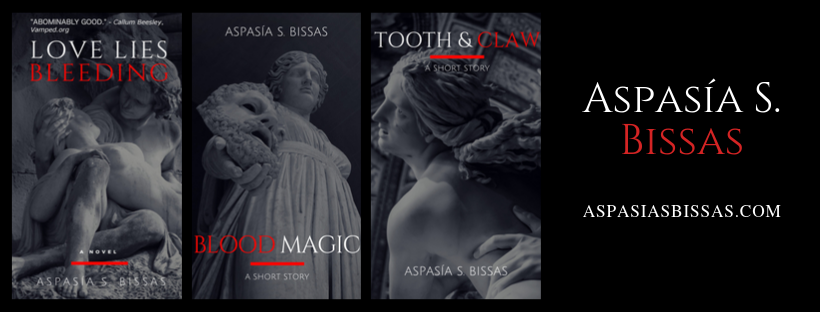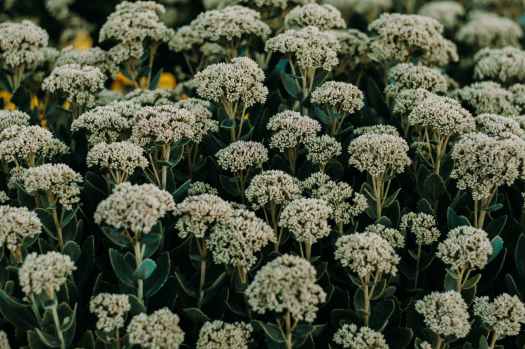‘Tis the time of year for ghouls and monsters and vampires, so I thought I’d share this short piece again, for those of you who haven’t read it (or who feel like re-reading it). Enjoy!

Note to the reader: the following text is transcribed from a document found in the crawlspace of an old row house in Montreal, Quebec. The owner of the building sent it to a local historical association, who are now sharing it in hopes that someone might have more information.
Interview with "Mara," a young woman who claims to be a vampire By J.S., editor at large April 5, 1918. J.S.: Could you please state your name for the record? M: You can call me Mara. J.S.: Is that your real name? M: Real enough. It's the only one I have left. J.S.: Could you tell me what you said when we met earlier tonight? M (does not reply) J.S.: When we met, I asked what a young lady was doing out alone in the middle of the night. How did you respond? M (smiles): I told you that I am a vampire. J.S.: A vampire--like Mr. Stoker's Count Dracula? M: As far as I know, he is fictional. I am not. J.S.: What would you say to those who don't believe in such creatures as vampires? M: Your lack of belief doesn't make me any less real. J.S.: How long do you claim to have been a vampire? M: Most of my life. J.S.: How long is that? M: Isn't it impolite to ask a lady her age? J.S.: Do you drink blood? M: Of course. J.S.: Where do you get it? M: Wherever I can find it. J.S.: From animals? M: No. J.S.: Do you have a reflection? M (gets up and walks to the lavatory. She stares into the mirror over the sink): It would seem so. J.S.: Can you turn into a bat? M (does not reply) J.S.: How many other vampires are there? M: More than your kind would care to consider. J.S.: My kind? You mean mankind? Human beings? M: Yes. J.S.: Do you pay attention to human events? What do you think of the Great War? M: I wish I could be there, in the thick of it. J.S.: Do you mean as a nurse? M (laughs) J.S.: Why do you want to be at the front? Isn't it dangerous? M: The danger is why. It's all death and chaos. People die, people go missing--no one gives it a second thought. Vampires do well in times of war. J.S.: If that is the case, why aren't you there? M: Someone else is there. He's looking for me. I do not wish to be found. J.S.: Who is there? M: You should worry about the illness instead of my acquaintances. J.S.: The illness? Are you referring to the Spanish Flu? There are rumours of epidemic. M: The rumours are correct--the influenza is spreading rapidly. I can smell it in the air. J.S.: You can smell it? That must be handy. M: It helps us to choose. J.S.: What do you mean by 'choose'? M: Most of us prefer blood from healthy specimens. J.S.: And the rest? M: We find those who don't have long. Some consider it a kindness. J.S.: Why are you telling me this? M (does not reply) J.S.: I don't have the Flu. M: No, you have something deeper. In your bones. J.S.: Oh, really? What does that smell like? M: Like sour chalk and dry rot. J.S.: Rot is right. You expect me to believe such nonsense? M: What about that ache that never seems to go away? It's been getting worse, hasn't it? J.S. (reluctant to respond) J.S.: I have an appointment to see a doctor. M: He won't be able to help you. J.S.: How do you know? M: They rarely can. J.S.: Then what can anyone do for me? M: I could prescribe you herbs, but they won't help, either. J.S.: A vampire and an apothecary? That is quite the combination. M: I learned my trade young and found that it pays to keep humans healthy. J.S.: Is that it, then? All you can offer are ineffectual balms? M: I can also offer you a kindness. J.S.: You mean death. M: Some prefer it to suffering. J.S.: What if I refuse? M: It's your choice. You have time to decide, but not much. J.S.: Where are you going? M: I have other business to attend to. I'll return in a fortnight. Tell me then what you've decided. J.S.: Will it hurt? M: I can make it so it doesn't. M leaves and I finish recording our exchange. I don't know why, perhaps for posterity.
I am unsure how to proceed.
Want to read more about Mara? Download my books now….

Love Lies Bleeding: Smashwords, Barnes & Noble, Kobo, Apple Books
FREE Blood Magic: Smashwords, Barnes & Noble, Kobo, Apple Books
FREE Tooth & Claw: Smashwords, Barnes & Noble, Kobo, Apple Books
If you prefer paperback, use this link to order Love Lies Bleeding from Bookshop – a portion of each sale goes directly to independent bookstores, as well as to myself. Thank you for supporting indie! ♥
Cheers,
Aspasía S. Bissas



